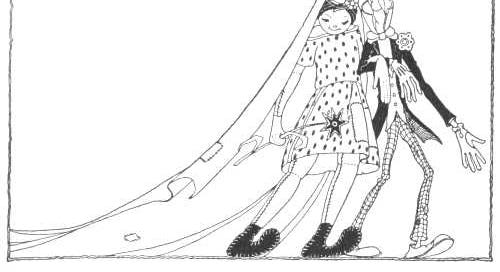Tiny Wonders: Carl Sandburg, My Mother, and the Prune-Eyed Rag Doll
Because June is for dolls, prunes, and a little magic

Part of the Tiny Wonders series: short reflections on children’s books, faith, and everyday holiness.
When I was in the third grade, we took a field trip from Spartanburg, South Carolina to the Carl Sandburg home just across the state line in Flat Rock, North Carolina. It was about 45 miles away, but on a hot, end-of-the-school-year day, it might as well have been a thousand. The kind of day when the air clings to your legs, the school bus smells like crayons and juice boxes, and even the goats at the destination seem to be sweating. If you paused at that last phrase—goats!—I did too, when I first heard about this cool poet with goats in elementary school. I remember thinking how funny it was that a poet had goats then at all. And being in wonder at it all, too.
Sandburg had moved to this home, called Connemara, in 1945, spending the last two decades of his life there while his wife raised champion dairy goats and he kept writing and dreaming. Can you imagine the wonder of that type of life?!
The truth is at that time, I didn’t know exactly what a poet was—but I knew my mom did when I went on this field trip. She was a high school history teacher who loved books—and, more importantly to me then, dolls too. When I brought home a little booklet of Sandburg’s Rootabaga Stories from the gift shop, she read one aloud to me that night with reverent glee: The Wedding Procession of the Rag Doll and the Broom Handle and Who Was in It. We read it together, then I read it aloud, over and over again as a child.
Carl Sandburg was one of those rare American writers who seemed to get children—and to capture magic in the ordinary in ways that made both my child mind and my mom’s adult one sing. Born in 1878 in Illinois, he wrote poetry, biography, folk music, and children’s tales, often with the same plainspoken lyricism. His Rootabaga Stories, written for his own children and the one I found in that gift shop that day, offered a distinctly American twist on fairy tales. There were no castles, no kings or queens in these, but instead they were sprinkled with pigs in bibs, rusty rats, and cream-puff musicians. It’s the kind of world a child who yearned to be a writer one day might dream up while staring at the trees whizzing by outside a school bus window on her way to a field trip that no one else in the class really seemed interested in, but for some reason, her mother thought she might like it.
(And she did.)
In The Wedding Procession of the Rag Doll and the Broom Handle and Who Was in It (I love writing the full title of the book), a rag doll loses her eyes—originally two glass buttons. Then, a kindly—rather gentlemanly—broom handle replaces them with California prunes. What happens next is a story only a child—or an inventive American poet only the likes of Sandburg—could dream up: a wedding, a parade, and a procession full of dancing, banging, chewing, and cheering characters! Sandburg writes:
“When the Rag Doll married, it was the Broom Handle she picked because the Broom Handle fixed her eyes. A proud child, proud but careless, banged the head of the Rag Doll against a door one day and knocked off both the glass eyes sewed on long ago. It was then the Broom Handle found two black California prunes, and fastened the two California prunes just where the eyes belonged. So then the Rag Doll had two fine black eyes brand new.”
I love how everything in this story feels a teensy bit ridiculous yet also exactly right at the same time somehow when you read it—to a child’s ears and to mine still, revisiting it today. In a child’s world, of course a wedding begins with an act of kindness and ends in a party full of spoon lickers and tin pan bangers. (My mom also happened to love prunes, which is probably another reason this story made us both laugh. Who could like prunes? I used to tease her. Yet she had them hidden away in our kitchen cupboard as if the rest of the family might steal them and were secretly coveting them. For her—and for us reading together—they made the perfect start to a love story full of imagination and fun. And dolls!)
Now, my daughter is the age I was when I first heard this story, and she loves dolls too—some store-bought, some homemade, and many, many imagined. She talks to pencils and cardboard tubes, gives personalities to forgotten toys, and I can’t help but see Sandburg’s (and my mom’s) legacy living on in her room.
And if I’m honest, I still dance with the broom sometimes. I caught myself this past weekend spinning it around the kitchen while tidying for my son’s eleventh birthday party. There’s something about early June—the sunshine lingering late, the buzz of end-of-school excitement—that invites us to remember how to make things up as we go. To imagine a little more. To play a little more. It’s summer’s special permission to let the ordinary become enchanted again. To believe, even, that prunes are worth stashing away and hold promises of love.
Sandburg’s rag doll story reminds us that the world doesn’t have to be new or shiny to be full of wonder. Sometimes all it takes is an act of kindness, a broom handle, and a little imagination.
Did you ever concoct a story about or “with” a spoon, a shoe, a sock? Do you still remember what they said back, or who you were when you listened by any chance?
In hope and holy curiosity,
LuElla



